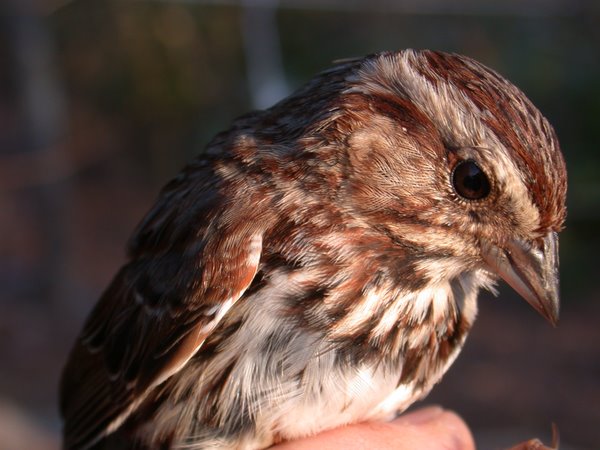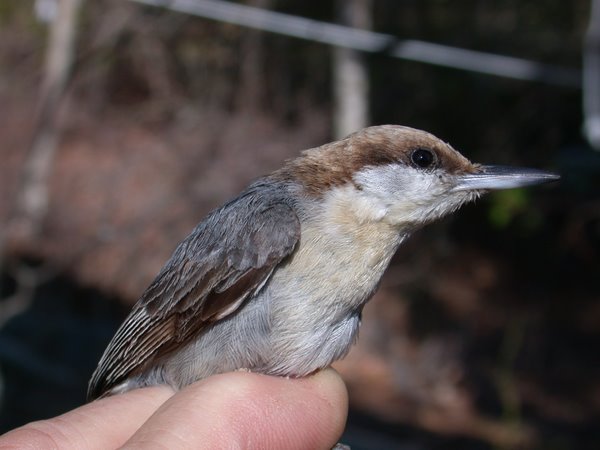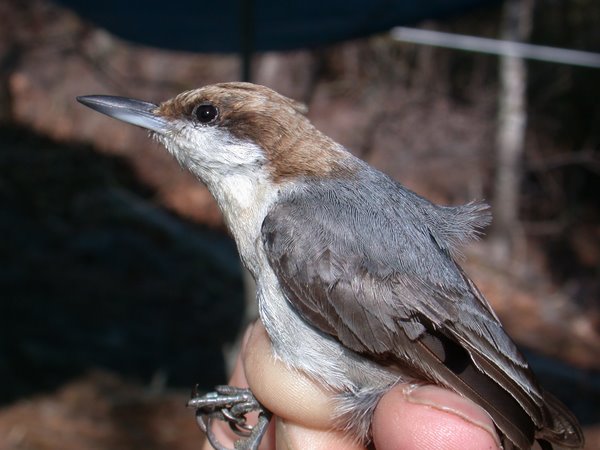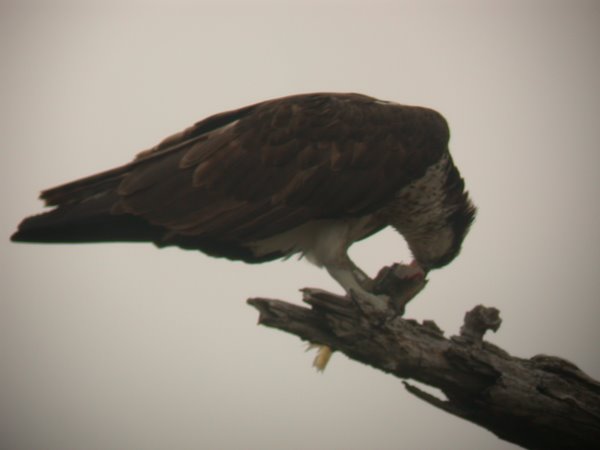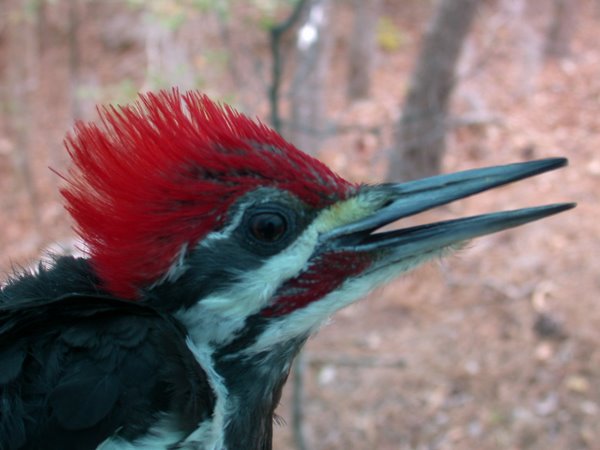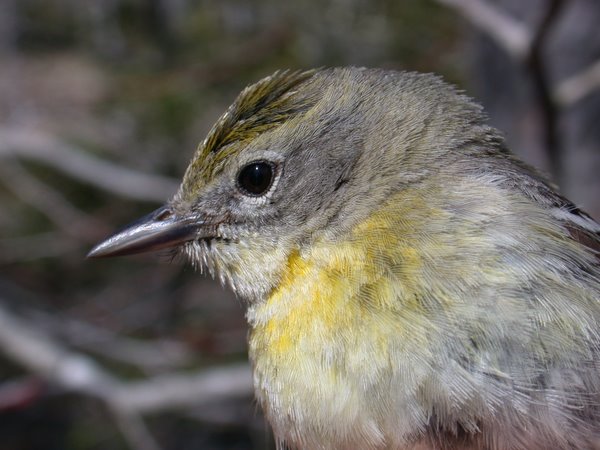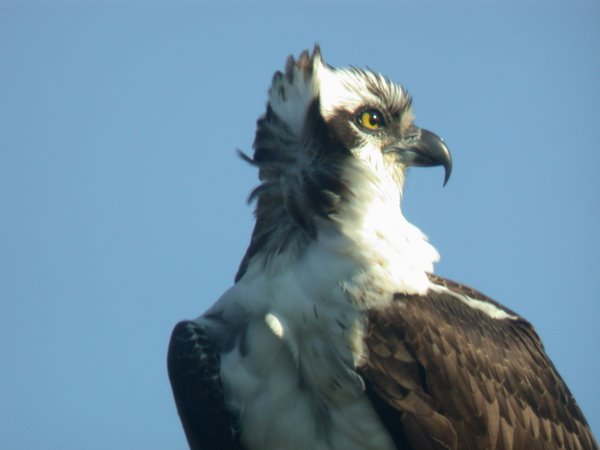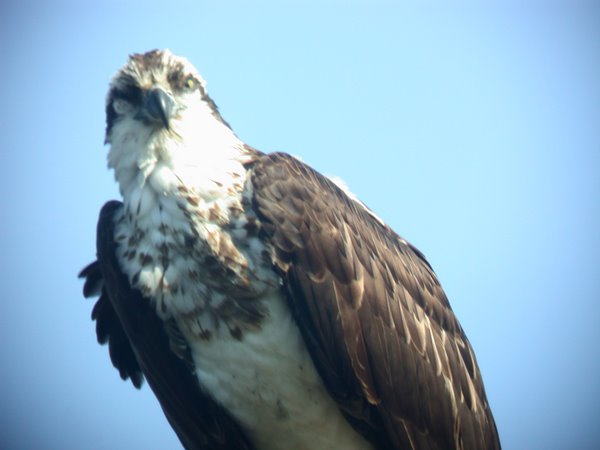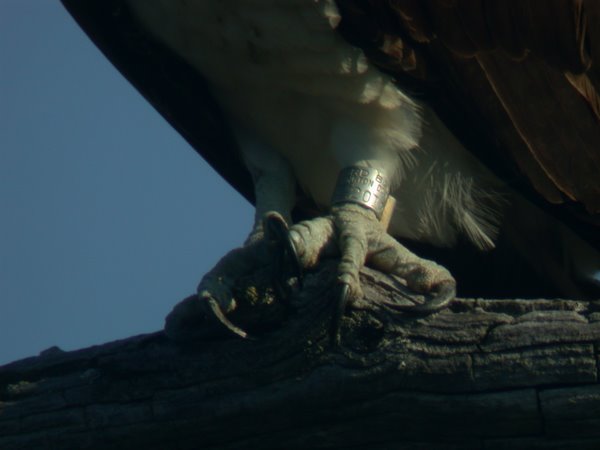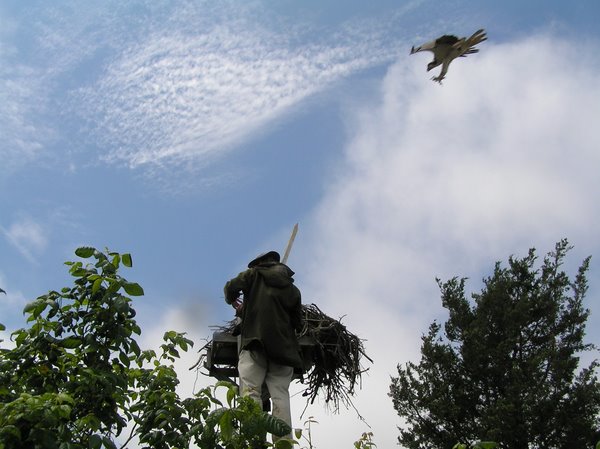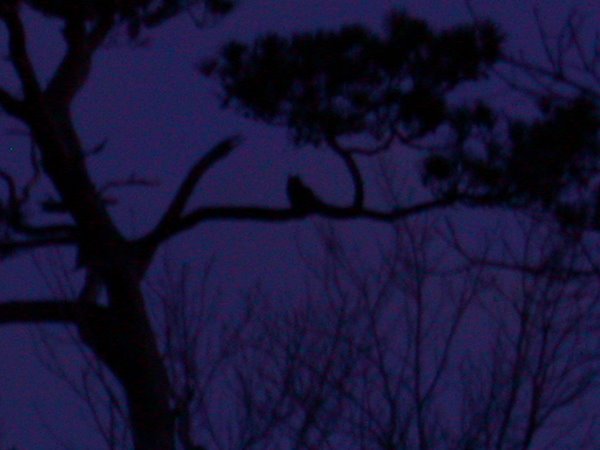



Well, almost. A fledgling nuthatch lacks a brown head, at least when the bird is only eight days out of the nesting cavity as is the individual pictured above. The clutch at the station cavity fledged on Sunday, May 4. This individual was caught in aerial net C1, about twenty yards from that cavity, yesterday morning at 0715. The brown cast to head which appears in the last image is greatly exaggerated, probably caused by poor early morning light conditions.
For the record, the fledgling weighed in at 10.3 grams. This is an "adult" body weight. A nuthatch in the egg weighs about 1.2 grams. (Six BHNU eggs were weighed at a nest placed in a nesting box along Long Creek several weeks ago. Each weighed 1.2g. Unfortunately this nest was destroyed by an unknown predator.) Quite a transformation in six weeks time! It took four adults feeding daily, often before dawn, for 25 days or so to pull it off.
Yesterday afternoon before the storm rolled through Virginia Beach, three new adult BHNUs were captured using the high net while hauling feed to a recently-discovered nesting cavity just off the 64th Street road in the Park. (There are now four active cavities under observation in this section of the park.) The three newly-marked adults together with the fledgling pushed to thirty the number of nuthatches marked at First Landing since mid-January 2008.






















































